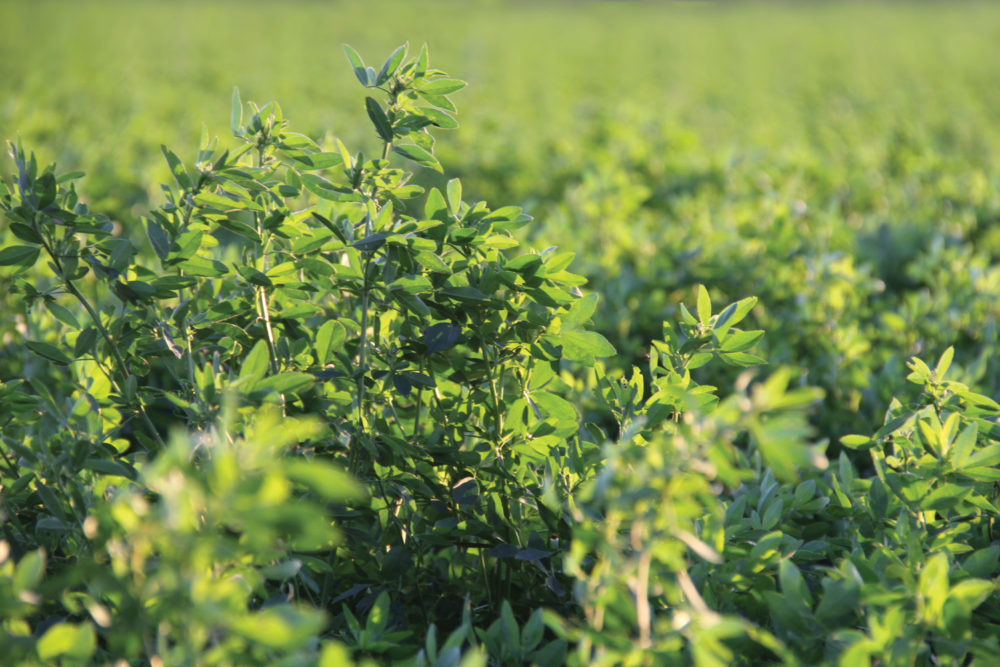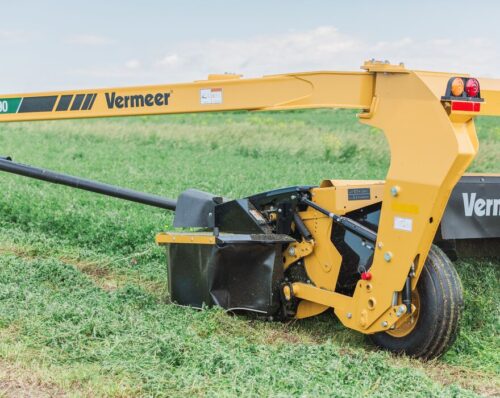
Farmers Switching Cash Crop Acres to Forage Crop Acres
October 2018
Raising More Alfalfa? Be Attentive to Your Market
Earlier this decade, corn and soybean markets had farmers tilling up ground that was used for other crops or native grass to capitalize on prices more than twice current levels. Eight-dollar corn and $14 soybeans were strong incentives for some farmers who saw more opportunity in row crops than in alfalfa and other forage crops.
But times have changed. In today’s era of $3 corn — especially given short supply, high demand and bullish markets for alfalfa — more farmers are looking at the forage marketplace as a source of positive revenue that the corn and soybean markets lack. However, the successful transition to increased alfalfa acres requires attention to market conditions, machinery needs and whether your fields are suited to a strong forage crop.
If you’re primarily a row crop producer but have at least a few alfalfa acres, you’re positioned to make the switch. But it’s about more than just your productivity; in order to successfully make the transition, you need to have a market for your hay, according to University of Nebraska Extension Forage Specialist Bruce Anderson. Making sure you have an outlet for increased alfalfa production is priority number one, said Anderson, because it influences many other factors that go into the equation.
“If you don’t have a market, that hay can sit a long time with nowhere to go. This is by far the thing that anyone interested in expanding should look at first: where that hay’s going to go and who’s going to buy it,” said Anderson. “Then, it’s important to develop and produce the kind of hay that’s going to be attractive to buyers in that marketplace.”

Machinery Considerations
Confirming that market is the first step for multiple reasons. Some market opportunities may require specific machinery, and it’s important to have what you need to consistently meet market demand. If you raise a few acres of hay, you likely already have your machinery bases covered. But if you’re growing your market presence — especially with buyers located more than a few miles down the road from your farm — the right equipment may be different than that to which you’re accustomed.
“Machinery costs are a major part of the whole hay operation, and if you aren’t already at least partially equipped to raise more alfalfa, starting from scratch is a really tough thing,” said Anderson.
The features of the machinery you add in expanding forage production can do more than just grow your capacity. It can also set you apart from other hay producers in offering customers quality enhancements. For example, the Xtracut17 chopper system available on the Vermeer 604 Pro baler can add chopping capability to the machine, enabling you to market various lengths of chopped hay as well as traditional round bales.
Geography, namely where you’re selling your increased hay production, also plays a role in the machinery necessary to expand alfalfa output, both in how you put up your hay and move it to its final destination.
“If you are considering hauling hay from Nebraska to customers in Wisconsin or Pennsylvania, for example, you have to be looking at the right kind of bale size and type to facilitate that kind of transportation,” Anderson said.

Grow What Your Customers Want
Once you’ve confirmed the right market and determined the right machinery lineup for your expanded alfalfa operation, it’s important to do what it takes to produce what your newly expanded customer base wants. That’s a process that includes accounting for quality, tonnage and the right bale size and type, Anderson said.
“I want to manage my hay to be attractive to buyers and position myself the best way, whether I’m selling to a cow-calf producer or a feedlot. I want to develop a relationship with them and put up hay the way they will want it, whether that’s large round bales or big squares,” Anderson said. “If there’s a dairy close by and you don’t want to go with big square bales, they might be willing to consider working with a producer wrapping big round bales as baleage. The producer needs to develop the kind of hay that’s going to be attractive to his or her target market.”
While markets like large dairies prioritize high quality in purchased alfalfa, quality is less of a priority for other market sectors. That’s another area in which to be attentive to specific market customers’ needs. Every customer is different.
“Not all hay has to be the highest quality. It depends on your location and who you’re targeting, especially in a lot of areas where we do have significant numbers of beef cattle. We can very conceivably work with lower-quality alfalfa and be able to find a market for some of those products,” Anderson said. “For feedlots and some cow-calf operations, making hay is still a labor-demanding job. There are some folks who are more inclined to say, ‘Looking at the cost and labor of doing this, I’d rather buy it than grow all that hay.’ There are opportunities there, and you really have to be out there scouting them out before you make the big investment in expansion.”

Be Consistent, Flexible
The alfalfa marketplace is generally highly variable based on regional supply and demand. And in years like 2017, for example, overall production may be shortened by drought. Being attentive to that sort of variability — whether because of long-term demographic shifts or shorter-term weather extremes — is important, but even more so is maintaining consistent alfalfa output.
“I think the opportunity to grow alfalfa acres right now is sustainable for growers who are good at consistently producing the product their customers want,” Anderson said. “If you happen to just get some good hay at a specific point in time and can capitalize on it, that’s great, but would not be a good trigger for expansion.”
Sometimes those needs change, too. That’s why it’s important to be ready to adapt to what your customers need, especially when they’re facing structural market changes of their own.
“If you’re working with dairymen, be able to talk their language and discuss their hay needs from the standpoint of how it will influence milk production,” Anderson said. “But if milk demand declines and producers don’t want to spend as much on hay, be ready to adjust to what that will mean for both hay pricing and quality. Focus on what they need, how much they will pay for it and how you can meet those needs with your current operation. Or think of ways you can adjust.”
That’s why it’s important to be versatile and able to meet customers’ evolving needs. Machinery like the Vermeer 504 and 604 Pro balers were built with versatility in mind, enabling the operator to produce bales of a range of forage types and conditions, ranging from dry hay to silage.








